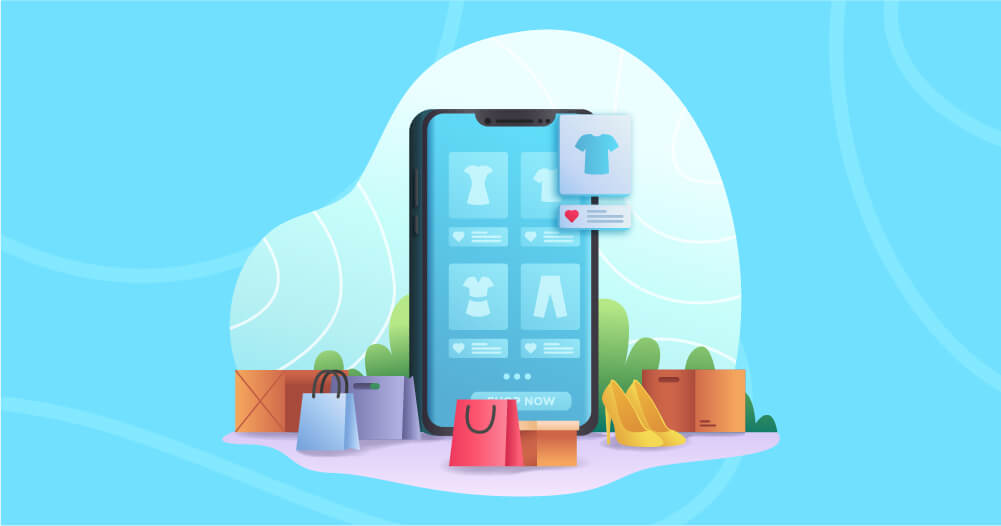
Social media is becoming a new go-to when shopping. Since social media has allowed businesses to promote products, ecommerce companies have become fierce in competing with the others on the platform. If you think your new ecommerce business won’t go neck and neck with others in your niche, think again. Learn about the basics of building an effective social commerce strategy to catch up with your competitors.
1. Know Your Audience

Social media audiences vary per platform. That could pose an issue for marketers and business owners reaching their audience. However, your goal isn’t to target everybody.
Social media platforms are channels to connect with your audience. This means you have to create personalized content to engage with them. Here are ways to know your audience better:
- Refer to your audience or buyer persona
- Check analytics to find out the demographics
- Use audience research tools
2. Plan and Personalize Your Content

Content planning is crucial in building an effective social commerce strategy. It’s even more challenging if you post on various social media platforms. But that shouldn’t hinder you from creating personalized content.
Although you’re posting on several social media platforms, it doesn’t mean you have to publish different designs or videos. You can make minor tweaks like sizes or colors. Alternatively, you can mix up media types for one social media platform but keep the same caption.
To add, ensure you have links or a call-to-action (CTA) when posting text or captions on social media. With this, you can direct the audience to your site.
For instance, you can add a “link on bio” on Instagram to avoid adding links every time. Speaking of which, you can add hashtags to posts. This is also applicable to other social media platforms.
You can rely on a social media content calendar to plan your content. This way, you can also consider holidays and produce custom designs for these events.
3. Use Advertisements

Sprout Social reveals marketers value their organic content more than their paid ones. Although that’s the case, advertisements remain a great tactic to reach your audience! In fact, you should post organic and paid content to further your reach.
However, when publishing social media advertisements, you need to know each platform’s requirements. Moreover, you need to specify your advertising objectives. Plus, you have to prepare a budget that would increase your exposure. Here’s our quick guide on what to know when advertising on top social media platforms (Instagram, Facebook, Twitter, and TikTok):
Meta
It’s easy to post Meta ads if you know your objectives and have a set budget. Meta objectives include:
- Sales
- Leads
- Engagement
- Traffic
- Awareness
- App Promotion
One advantage of advertising on Meta is it allows you to crosspost ads on Meta brands (Instagram, Facebook, Messenger, WhatsApp). Plus, you can post various ad formats like:
- Image
- Video
- Carousel
- Collection Ads
If you want to see how other brands or businesses post on Meta, check out the Meta ad library to view active ads. You can get inspiration on how your competitors publish ads. Or, you could browse Meta for Business success stories to know how brands succeeded with their ad campaign.
Twitter is similar to but simpler than Meta. You can choose among three objectives:
- Awareness
- Consideration
- Conversion
Plus, you can choose among five ad formats:
- Image
- Video
- Carousel
- Takeover
- Text
TikTok
TikTok provides various advertising formats, depending on your business type. Plus, TikTok says that you can publish your ad in three steps. It starts with goal setting. Then, choose the ad type and upload the creative. Finally, publish and monitor your campaign.
4. Leverage Shopping Features

Social media channels have become attractive platforms to market and advertise your Ecommerce business. Aside from building an online presence on social media by posting about your business or products, you can use dedicated shopping features to make the shopping experience easy and seamless.
Meta
Meta (Instagram and Facebook) is a leader in social commerce. They allow ecommerce businesses to create online storefronts and promote products.
Instagram is one of the best places to grow your ecommerce business. Instagram Shopping helps you create collections and product detail pages. Plus, you can enable checkout for a seamless shopping experience. This is also applicable to Facebook Shops.
Check out the Instagram Shop for Glossier. The beauty brand allows you to browse products based on categories they created or what’s suggested for you. From there, you can visit their website to learn more about the product and purchase it.
Meanwhile, Twitter has its native Twitter Shops feature. Although most businesses have Instagram and Facebook shops, Twitter provides big opportunities to promote your store. So far, only US-based businesses can set up a Twitter Shop by showcasing new, best-selling, or low-cost products.
Check out these examples from Shein and Samsung on how to use Twitter Shopping. Shein focuses on promoting their best-sellers. Meanwhile, Samsung showcases its flagship phones to entice users to get the latest smartphones.
TikTok
Finally, TikTok also has a Shopping feature. Sellers or creators can use their live shopping, shoppable videos, or product showcase features to attract followers to purchase. Plus, you can track analytics and manage your store while your followers can buy directly!
Other social media platforms with Shopping features:
- Snapchat
- YouTube (eligible creators)
5. Partner with Micro-Influencers

One effective social commerce strategy to leverage for your new ecommerce business is partnering with micro-influencers. It can be challenging to partner with one, especially if you’re a newbie and your competitors have built a reputation already. But that shouldn’t discourage you from connecting with a micro-influencer.
Another challenge of partnering with a micro-influencer can be finding the right one. However, influencer marketing tools can help you connect with influencers who can bring you the best results for your campaigns. Plus, having micro-influencers by your side can increase brand exposure to thousands.
When you pinpoint the right influencer, you need to collaborate with them regarding content. This way, your brand remains consistent even when promoted by an outside entity. Plus, you agree about the substance and content type to attain your goals.
If you want to follow in the shoes of a famous brand regarding influencer partnerships, Aerie should serve as your inspiration. They have an ambassadorship program that allows them to partner with micro-influencers. The influencers post video or image content, and Aerie reposts it on their social media pages.
6. Focus on One or Two Platforms
Businesses will use various social media platforms to promote their products. But not all social media platforms will yield the same results. After all, it depends on where your audience will be and who your target audience is. But if you want an effective social commerce strategy, you can run campaigns on one or two platforms. Sometimes, when you do multi-channel marketing campaigns, you may experience success on one platform, while you won’t meet your marketing goals with another.
For instance, you can focus your promotional efforts on Facebook or Instagram. Meta, the parent company of these popular social media platforms, has a dedicated advertising feature. You don’t need an outside tool to help you promote your campaigns and drive more sales!
7. Build Rapport with Chat
Chat is another way to engage with your current customers or reach new ones. Some customers may inquire about your product or service. It’s up to you how you’ll approach this, but you can send them a link to your website or the product link on your social media profile. Plus, you can even upsell to drive more sales!
Additionally, since chat is a way to resolve issues, make sure you have a call to action like, “Send us a message anytime for any questions about our products.” This way, they can reach out to you anytime, and with the right timing, you can promote other products, too!
8. Consider Live Shopping Events
Live shopping is common on social media platforms like Instagram and TikTok. These events can help you engage with your followers and target audience. You or your staff member can go to the live shopping event and encourage others to join in. However, if you’re camera-shy, you can delegate this task to a micro-influencer to reach more audiences!
The live event can showcase products almost out of stock to entice followers to buy them. Or, you can promote those that are still available or limited edition! If it’s also possible, give them something free along with their purchase.
9. Publish User-Generated Content
Although you partner with influencers for your marketing campaigns, you might be missing a vital brand ambassador to pull in more customers: fellow customers. They are a great source of legitimacy and trustworthiness, especially if you’re a new business on the block. You can feature them as a post or story! Plus, make sure that you have permission to post them before posting their content on your social media profile.
Here are some ways to post user-generated content on your social media pages:
- Create a unique graphic with their review
- Re-publish their post to add to your social media profiles
- Feature them in your stories
10. Create a Visual Storefront
Aside from planning and personalizing content, don’t forget about creating a compelling visual storefront. Even your social media pages should integrate your branding.
For example, you can stick to high-resolution photos or videos of models using or wearing your products. That could be enticing and pique your target audience’s interest in your products. Meanwhile, you can feature the best products on your visual storefront instead of featuring everything.
Social Commerce Examples
ChicMe
Here’s one brand that found success using Facebook ads! The company used Advantage+ (a Meta feature) to help them increase sales with their video and photo ads. Advantage+ can help brands personalize ads and enhance ad performance! They ran an A/B test campaign to measure the campaign’s performance. It yielded the following:
- 5% increase in incremental sales
- 27% increase in return on ad spend
- 23% sales conversion with Advantage+ shopping
Rimmel
Rimmel achieved their influencer marketing goals with the help of Bazaarvoice! Reviews have been crucial in getting more sales, and the brand wanted to increase interest and sales in their mascara. They tapped influencers to create authentic reviews to raise awareness and drive sales. The campaign was a success because the brand had a 44% sales lift thanks to influencers!
Lindex
Do you want to try your hand at live shopping to increase sales? Check out how Lindex achieved this feat! In May 2021, the company started a live-stream event. The brand introduced its spring collection in 2021. With a live fashion show, many viewers had added Lindex’s products to their cart. In fact, the brand had a 55% add-to-cart rate.
Wyze
Our final example of a successful social commerce strategy is Wyze. The wireless camera company utilized TikTok to drive sales. They used TikTok Shop Ads to reach their target audience. The brand used the social media platform’s Creator Affiliate Program to reach audiences in untapped markets. Here’s what the brand yielded after this successful campaign:
- Increased follower rate to 90,000
- 17 million impressions on the social media platform
- Acquired $1.7 million in sales using TikTok Shop ads
Chipotle
Another brand that leveraged TikTok for its campaign is Chipotle. However, they used user-generated content to increase sales! The brand partnered with an influencer. The influencer used the #flipthelid hashtag to encourage users to submit their version of flipping the Chipotle lid. This prompted the target audience to download the app and buy Chipotle items.
About the author

Katrina Pascual
Katrina is a content writer specializing in graphic design, marketing, social media, and technology. In her spare time, she writes monthly personal blogs to practice her craft.
Table of Contents
- 1. Know Your Audience
- 2. Plan and Personalize Your Content
- 3. Use Advertisements
- 4. Leverage Shopping Features
- 5. Partner with Micro-Influencers
- 6. Focus on One or Two Platforms
- 7. Build Rapport with Chat
- 8. Consider Live Shopping Events
- 9. Publish User-Generated Content
- 10. Create a Visual Storefront
- Social Commerce Examples
- ChicMe
- Rimmel
- Lindex
- Wyze
- Chipotle










